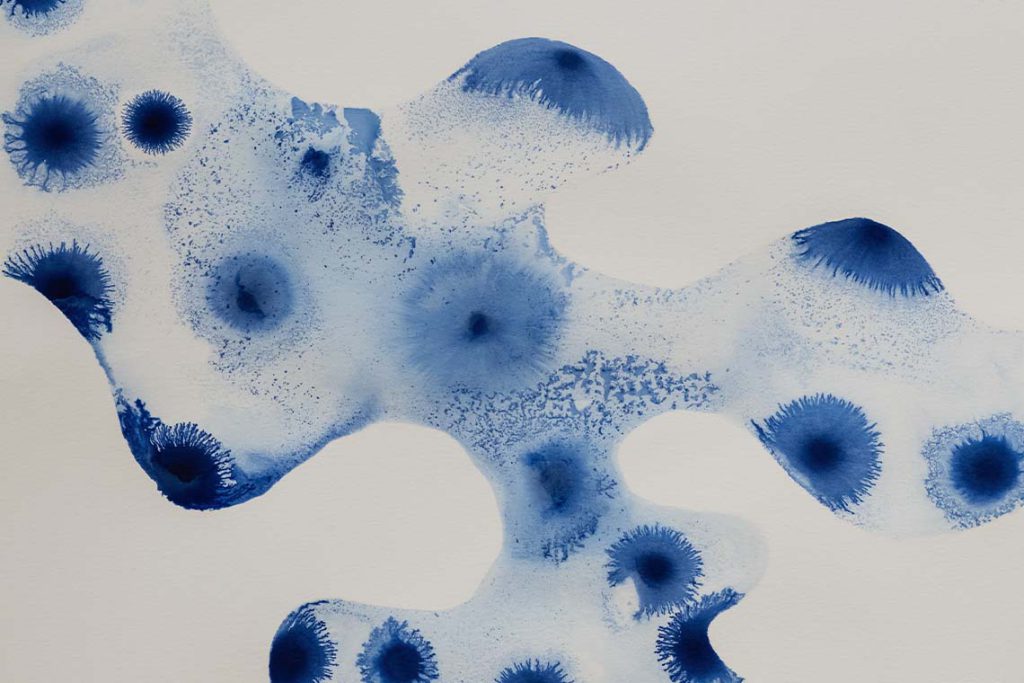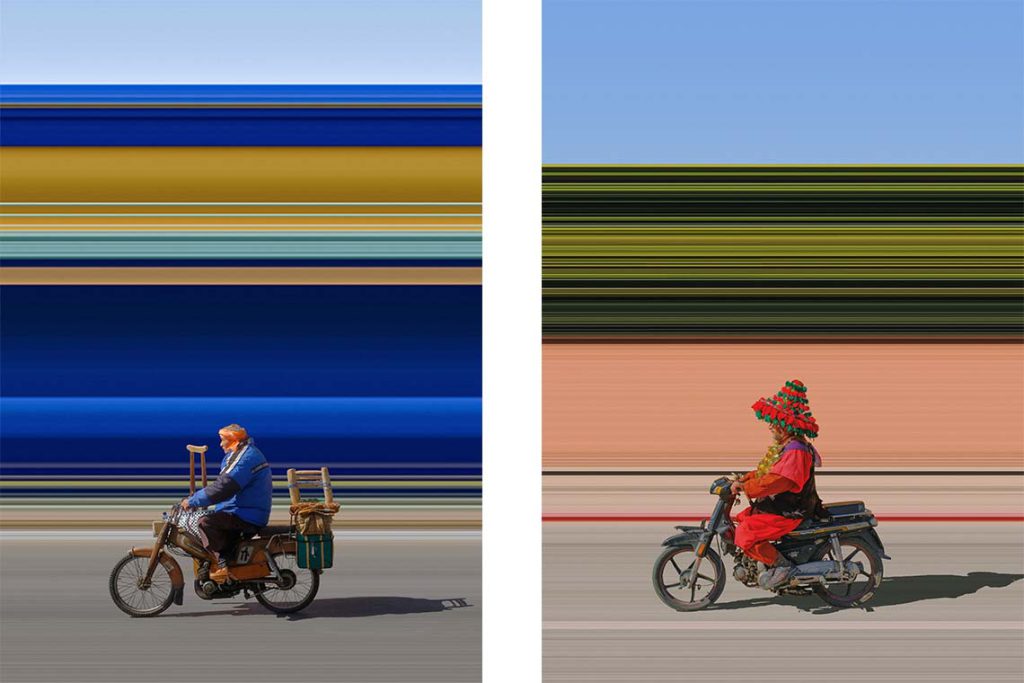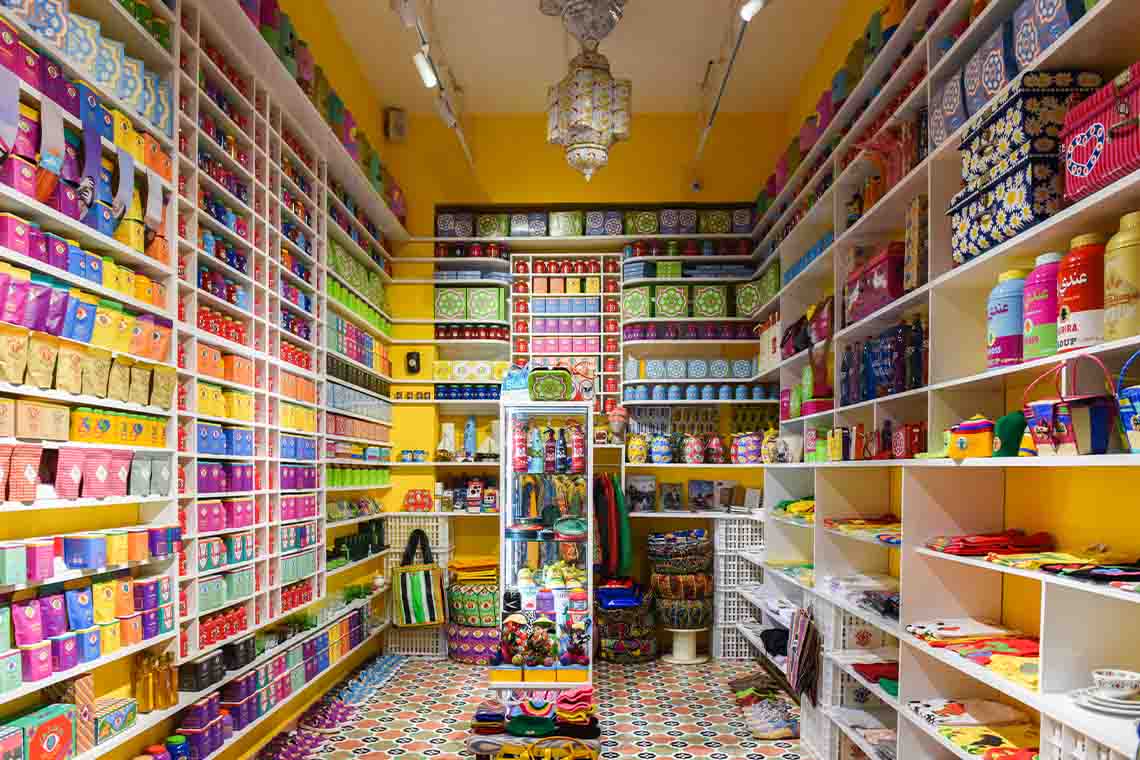1-54 Contemporary African Art Fair brings art from the continent to the global stage by positioning itself across three key regions. The most recent iteration took place in Marrakech (8–11 February) in a celebration that further developed the discourse around African art.
What began in London in 2013 has blossomed into a global platform for contemporary art from Africa and the African diaspora. Under the helm of Touria El Glaoui, founding director (see page 66), and with the diversified long-term support of Christie’s, the boutique event is held annually in London, New York and Marrakech (and previously Paris). Soon embarking upon Hong Kong with pop-up exhibitions open during 26–30 March 2024 to coincide with Art Basel Hong Kong, a multifaceted approach is part of 1-54’s DNA.
As the pioneering force in amplifying the voice of practitioners from Africa and its diaspora, 1-54 walks the fine line of shaping the dialogue while remaining approachable. This impact ranges from participant numbers, which are as digestible as the market value of the works on show, through to its physical space. The 2024 Marrakech edition reinforced this mission. Traditionally held at the Mamounia Hotel, in efforts to boost accessibility and appeal, this year’s iteration saw six galleries take over a second venue, DaDa, a multidisciplinary art space in the Medina. A gesture of inclusivity as much as providing more room to play curatorially, it also demonstrated the growing demand of the local art scene. Moreover, the two venues captured the inherent cultural verve of the city, as noted by Swiss-Moroccan artist and data scientist Zineb Mezzour, who exhibited her scientific, artistic and spiritual explorations of nature at DaDa with Myriem Himmich Gallery (Casablanca). “To go from one location to another, you have to pass through the Jemaa el Fnaa, so people see the craziness, the heart, the real Morocco,” she said. “That’s what I love about this fair in particular.”
Casablanca may have been Morocco’s original arts hub, but for those immersed in Africa’s contemporary art landscape, the vibrancy of Marrakech’s unique artistic spirit is magnetic. Amongst the 27 exhibitors were seven 1-54 newcomers, including CDA Gallery (Casablanca), Galerie 208 (Paris) and M CONCEPT Gallery (Dakar). Fourteen galleries were new to the Marrakech outpost, including African Arty (Casablanca), Christophe Person (Paris) and Gallery 1957 (Accra and London), which all brought artworks in tune with the city’s lean towards more reflective, culturally focused creation. These included portraits by Ghanaian Amoako Boafo (Gallery 1957), whose artist statement indicates that his figurative paintings refresh notions of the “representation, documentation, and celebration of Blackness.”

1-54 presents diverse practices, but textile-based works hold a special place in the Moroccan edition – a nod to a centuries-long tradition. Local architect-turned-artist Ghizlane Sahli’s Et la sève fût… (2023) at Christophe Person was a continuation of her pursuit of organic and corporeal themes. While her embroidery-based practice deviated from the usual large-scale and almost exclusive use of red, it maintains the same intimacy, delicacy and complexity. Made following conversations about menstruation with women in Burkina Faso, Benin and Dakar, and combined with references to the view from her Paris residency studio, Sahli acknowledged how discussion of the female body can be perceived as taboo. However, the work is personal and celebratory. “It’s so natural, we’re not doing anything wrong,” she explained. “We’re just talking about one of the most important things here on Earth: our bodies.”
Other artists, such as Ethiopian photographer Girma Berta, who showed with Nil Gallery, Paris, approached Morocco with a more macro perspective. Motion (2023) depicts candid moments of water carriers and hawkers, digitally enhanced with a signature speed effect to illustrate the energy of the locale. The result is a hybrid of street and contemporary photography, which Berta plans to use to capture every major African city. For the debut of his Marrakech series, however, the resonance was more than skin deep. By highlighting and honouring the overlooked, Berta touched – perhaps inadvertently – on 1-54’s ability to shed light on social and cultural discourse, as well as mirror the city’s accelerating artistic dynamism.
“For me, [Marrakech] is the cultural capital of Africa,” said Hugo Zeytoun, Nil Gallery founder. “The Maghreb, and by extension the Arab world, has so much to learn from this country, which has been able to assert its cultural exceptionalism and showcase its heritage without falling prey to the sirens of Westernisation.” Morocco pays homage to its heritage while creating a link between Africa, the Arab world and Berber cultures, he continued, adding it is a “crossroads of civilisations and tolerance, facing the future with respect for its traditions, heritage and past.” With this as a backdrop, fairs such as 1-54 have the opportunity to interrogate existing models and pursue an alternative, atypical and bold identity that has paved the way for what Zeytoun described as “incredible creative effervescence” in an otherwise “far too normative and conventional” art market.

The international nature of 1-54 allows galleries to make relevant, nuanced selections for each location while fostering long-term relationships between gallery, fair and audience. It benefits public engagement – visitors are able to witness the evolution of artists and develop richer connections to the African art ecosystem – as well as serving as a pillar of support for local talent and facilitating industry networks. “We have already built a strong relationship with 1-54 throughout the years, exhibiting several times with them in London, Paris and New York,” said Marwan Zakhem, founding director of Gallery 1957. Each participation has provided engagement with new audiences and first-hand experience of different local scenes beyond Gallery 1957’s existing spaces. It is a welcome opportunity and one that doesn’t only benefit arts professionals. Zeytoun pointed out that artists are often working on their own and that an art fair is the moment when they emerge from the studio and “come face-to-face with the real world”.
Moroccan galleries have also taken note of the fair’s value – participation doubled from four to eight this year. Most are Casablanca-based, but some, such as Loft Art Gallery and La Galerie 38, recently opened outposts in Marrakech, a sign of both the city’s relevance to the art industry and 1-54’s finger on the nation’s artistic pulse. “Our decision to open a second space in Marrakech was partly motivated by the presence of 1-54, which represents an important annual meeting point and significant visibility for our space,” remarked Fihr Kettani, co-founder of La Galerie 38. He has noticed the fair’s increasing significance and rising visitor numbers, which comprise an unexpectedly international crowd. “1-54 plays a unique and invaluable role in the development of the contemporary African art scene,” he added. “Its presence in Morocco is particularly effective, because our country is deeply rooted in its continent.”
With a firm emphasis on supporting artists through local and global exchange, paired with the broader mission to expand the discourse on Africa, 1-54 hosted satellite programming in collaboration with Moroccan organisations. Partners included Jajjah by Hassan Hajjaj, MAP Marrakech (Musée des Arts de la Parure), artist studios and residencies, and Black Rock Global Arts Foundation, with which the fair co-hosted a symposium discussing the current state of artist-centric African institutions. 1-54 Contemporary African Art Fair is the first and only event of its kind and has experienced year-on-year growth and success, but most importantly, noted Zakem, “having a champion of African art like 1-54 on the continent allows the art scene to be self-nurturing, directly receiving the benefits of its own output.”
This review first appeared in Canvas 112: Uncovered



